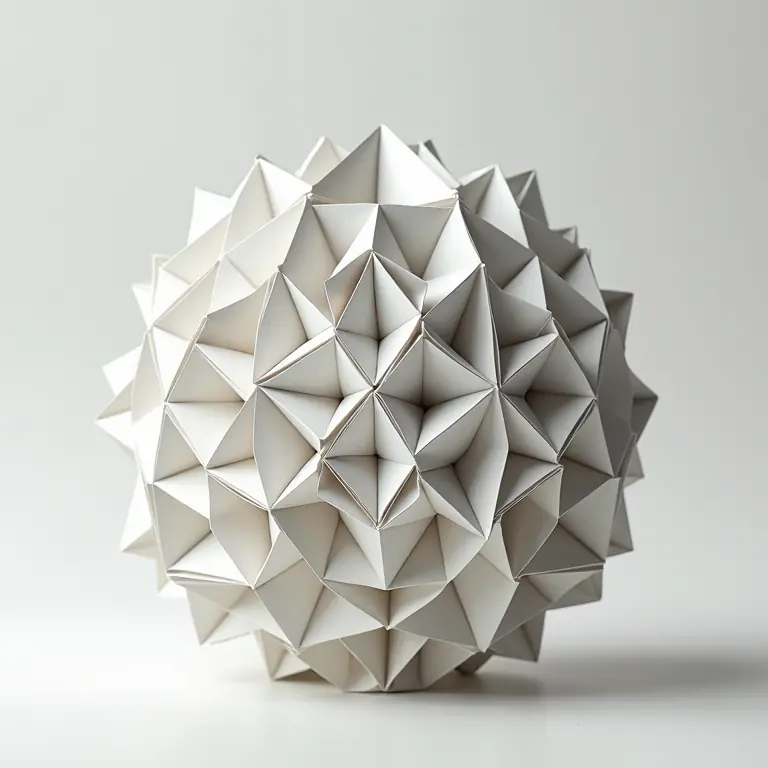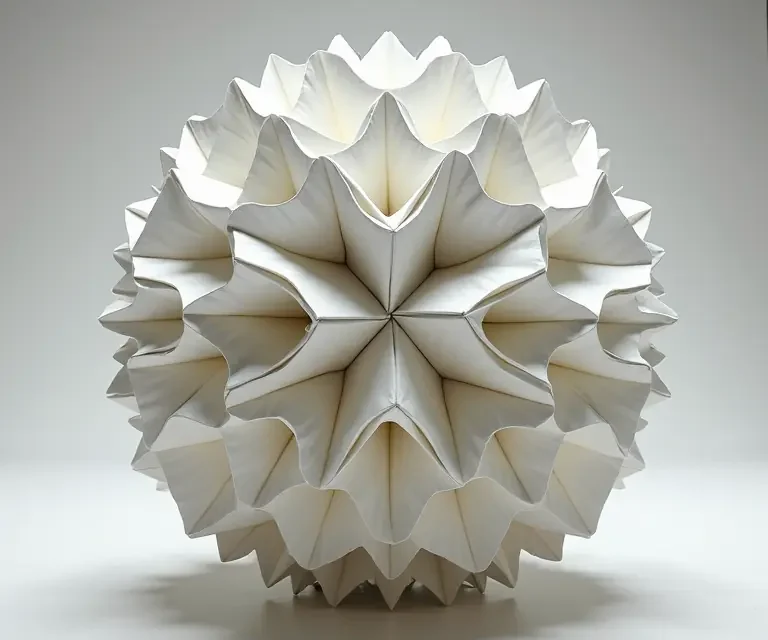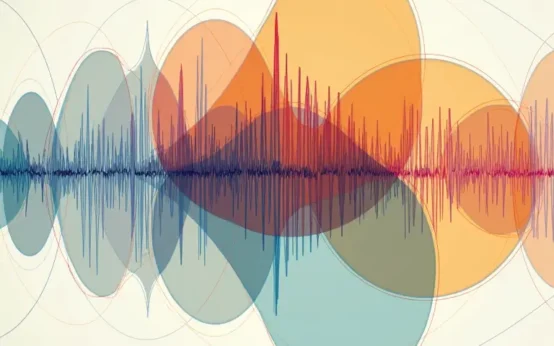Origami, the art of paper folding, often evokes images of delicate cranes, playful animals, and intricate geometric designs. But beyond its aesthetic appeal lies a surprisingly deep connection to mathematics. For centuries, origami wasn’t simply a craft; it was a practical application – and sometimes, a subtle exploration – of geometric principles. This article will delve into the historical relationship between traditional origami and mathematical precision, exploring how ancient techniques foreshadowed modern mathematical concepts, and how the art continues to inspire mathematicians today.
A History Rooted in Ritual and Practicality
The origins of origami are intertwined with the history of paper itself. While paper-making originated in China around the 2nd century CE, it wasn’t until the 6th century that it reached Japan via Korea. Initially, paper was a luxury item, reserved for religious ceremonies and the elite. Early Japanese origami, known as tsutsumi, wasn’t about creating representational forms, but about the precise and symbolic wrapping of gifts. These folds held immense cultural significance, representing respect, purity, and good fortune. The geometry wasn’t necessarily complex, but the accuracy and deliberate nature of the folds were paramount.
As paper became more accessible during the Heian period (794–1185), origami began to evolve. Formalized folding patterns emerged, often associated with Shinto rituals. Noshi, decorative folded paper attached to gifts, became increasingly elaborate, demonstrating a growing understanding of geometric possibilities. These early forms laid the groundwork for the more recognizable representational origami that would emerge later.
The Edo period (1603–1868) marked a turning point. Peace and economic stability allowed for the flourishing of arts and crafts, including origami. Hiden Senbazuru Orikata (The Secret of One Thousand Cranes Origami), published in 1797, is considered the oldest known printed origami instruction book. It showcased a linked series of 1000 paper cranes, symbolizing longevity and good health. This book, and others that followed, demonstrate a systematization of folding techniques and a growing interest in geometric complexity.
Geometric Principles Implicit in Traditional Origami
Even before the explicit application of mathematical theory, traditional origami implicitly employed key geometric principles. Here are a few examples:
- Symmetry: Many traditional origami models exhibit bilateral or rotational symmetry. The crane, perhaps the most iconic origami figure, is a prime example of bilateral symmetry. This symmetry isn’t merely aesthetic; it’s a natural consequence of the folding process and reflects an inherent understanding of balance and proportion.
- Angles and Proportions: Achieving a desired shape in origami often requires precise control of angles. Early folders understood, intuitively, the relationships between angles and the resulting form. The accurate repetition of specific angles was crucial for creating symmetrical and structurally sound models.
- Tessellations: While not as common in early origami as other geometric elements, tessellated patterns (repeating geometric shapes without gaps or overlaps) were present in some traditional designs, demonstrating an understanding of how shapes can be combined to fill a plane.
- Transformations: Each fold represents a geometric transformation – a reflection, rotation, or translation – of the paper. Master origami artists implicitly understood how to combine these transformations to achieve complex results.
These principles weren’t consciously applied using mathematical formulas. Rather, they were discovered through observation, experimentation, and the transmission of knowledge through generations of practitioners. The art form developed organically, guided by practical constraints and aesthetic goals.
The Mathematical Revolution: From Intuition to Theory
The 20th century witnessed a convergence of origami and mathematics. Mathematicians began to recognize the potential of origami as a tool for exploring geometric problems and proving mathematical theorems. This shift was spearheaded by Akira Yoshizawa (1911-2005), widely considered the grandmaster of origami. Yoshizawa didn’t just create beautiful origami; he developed a standardized notation system – the Yoshizawa-Randlett diagramming system – that allowed for the precise communication of folding instructions. This system was crucial for translating origami from an oral and visual tradition into a scientifically analyzable form.
The Seven Origami Axioms: In the 1990s, Robert J. Lang, a physicist and origami artist, formally defined seven axioms (fundamental rules) that describe the possible folds achievable with origami. These axioms, based on the physical limitations of paper folding, provided a rigorous mathematical foundation for the art. They demonstrated that origami isn’t just about arbitrary folding; it’s governed by a specific set of constraints.

Huzita-Hatori Axioms: Building on Lang’s work, Junko Goda and Makoto Huzita developed a more comprehensive set of axioms, known as the Huzita-Hatori axioms, which further refined the mathematical understanding of origami folding possibilities.
These mathematical breakthroughs had profound implications. Origami was no longer simply an art form; it became a powerful tool for solving geometric problems. Mathematicians realized that origami could be used to:
- Construct Regular Polygons: Origami can be used to construct regular polygons (shapes with equal sides and angles) that were previously thought impossible to create using traditional Euclidean methods.
- Solve Cubic Equations: In 2002, Robert Lang demonstrated that certain origami constructions could be used to solve cubic equations – a significant achievement with implications for algebra and geometry.
- Design Deployable Structures: The principles of origami are being applied to the design of deployable structures, such as solar panels for spacecraft and foldable architectural elements.
The Legacy of Traditional Origami in Modern Applications
The mathematical rigor derived from studying traditional origami continues to inspire innovation in various fields. Here’s a look at some contemporary applications:
- Engineering: Origami-inspired designs are used to create lightweight, strong, and foldable materials for aerospace, automotive, and medical applications.
- Robotics: Origami principles are being used to develop self-folding robots and adaptable robotic structures.
- Medicine: Researchers are exploring the use of origami-inspired folding techniques to create stents, implants, and drug delivery systems.
- Architecture: Foldable architectural elements, inspired by origami, offer innovative solutions for space optimization and disaster relief.
These applications demonstrate that the seemingly simple art of paper folding holds immense potential for addressing complex engineering and scientific challenges.
Exploring Related Disciplines: Consistent Patterns Across Crafts
The consistency of geometric principles across seemingly disparate crafts is fascinating. Like origami, other traditional arts and sciences reveal a deep understanding of underlying mathematical and observational principles. Consider the precision required in vintage typewriter mechanics, or the deliberate markings found in antique tool markings. Similarly, the evolution of penmanship styles demonstrates a consistent logic in the pursuit of legibility and aesthetic form. Even traditional herbal remedies, often dismissed as folklore, were based on careful observation and categorization of natural phenomena. The drive for consistency and order is a common thread.
The Enduring Appeal of Origami and its Mathematical Core
Origami’s enduring appeal lies in its unique combination of artistic expression and mathematical precision. It’s a craft that engages both the creative and analytical sides of the brain. The beauty of a perfectly folded origami model isn’t just about its visual appearance; it’s about the underlying geometry and the mathematical principles that make it possible. The journey from ancient ritualistic wrapping to modern mathematical exploration highlights the remarkable power of human ingenuity and the inherent connection between art and science.
As origami continues to evolve, driven by both artistic innovation and mathematical discovery, it promises to reveal even more surprising insights into the nature of geometry and the boundless possibilities of paper folding.
Further exploration into the consistent application of scientific principles can be found in the study of early map projections, where the challenges of representing a three-dimensional world on a two-dimensional surface necessitated complex mathematical calculations and a deep understanding of geometric distortions.


 The Unexpectedly Consistent Math Behind Musical Instrument Tuning: Harmonics, Ratios & Perfect Pitch
The Unexpectedly Consistent Math Behind Musical Instrument Tuning: Harmonics, Ratios & Perfect Pitch  The Curious Math Behind Ancient Building Proportions – Harmony in Stone & Structure
The Curious Math Behind Ancient Building Proportions – Harmony in Stone & Structure  The Surprisingly Consistent Math Behind Musical Harmony
The Surprisingly Consistent Math Behind Musical Harmony  The Geometry of Everyday Objects: Hidden Math All Around Us
The Geometry of Everyday Objects: Hidden Math All Around Us